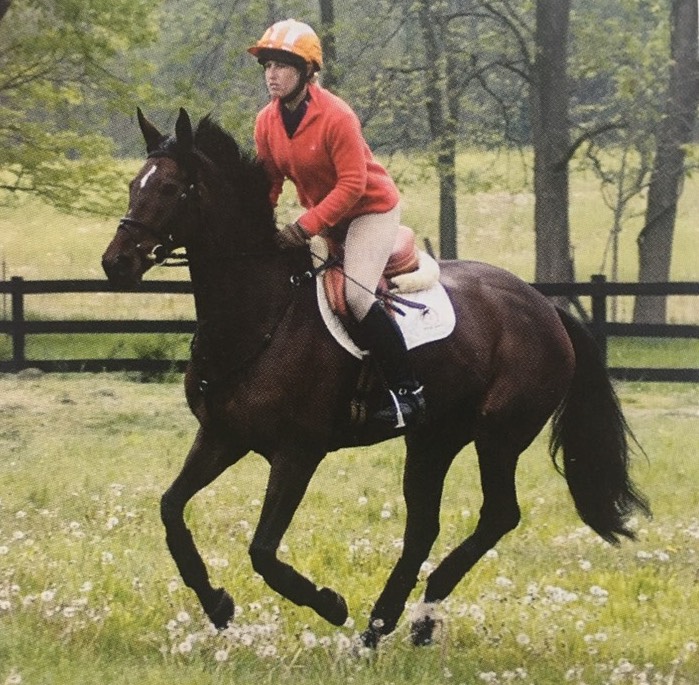QUESTION: I have just started eventing and I am confused about what bit my Thoroughbred needs. I am eventing him in a Stubben EZ Control copper link Dee. On stadium he is fine, but on cross country, I feel I need more brakes. Because I am still new to jumping, I don’t want to go to what I am used to riding him in (Tom Thumb mullen mouth pelham). I want to try to establish control without bugging him in the mouth or doing circles between every other jump or so. What “middle-of-the-road” bit would be a good start to try without going over the top?
SHARON WHITE: It’s essential for anybody starting to event to feel comfortable and in control on cross country. One part of the solution is finding the correct bit for you and your horse. The other is practicing riding in large pastures at home, to improve both your and your horse’s balance and confidence in the open. (Many horses with limited experience riding in the open have trouble finding their own balance on uneven terrain and need to practice doing it just as much as their riders.)

While selecting your bit, keep two things in mind: First, a bit is only as harsh as you make it. Milder bits can be much more severe than stronger bits if they require you to yank more on your horse’s mouth. Second, different horses like different shapes and styles of bits; there is no perfect bit to suit all horses. So, it may take a little experimentation to find a bit that works for you.
Whenever you change bits, adjust the severity level very gradually—never jump from a mild bit to an extremely severe one. The general progression from milder to stronger bits goes from a loose-ring snaffle to an eggbutt snaffle, a Dee ring, a full-cheek snaffle and then to bits with more leverage such as pelhams, gags, etc.). Your Dee-ring bit is on the milder end of the spectrum and, because it doesn’t seem to be working, I’d try something a little stronger, such as your Tom Thumb, which is actually a good “middle-of-the-road” bit. Like other pelhams, it has a fairly soft mouthpiece with just a little added leverage to give you some extra control. I would recommend using rein converters with it, so you don’t have to deal with the complication of riding with double reins.
To be sure that you don’t catch your horse in the mouth in the air over jumps, ride with some sort of breastplate or martingale yoke. This will give you something to hold on to when you feel your balance slipping. It’s a normal instinct to pull on the reins when you feel out of balance or your horse suddenly spooks. Knowing that you have the yoke there to grab instead of the reins will raise your comfort level significantly.
You’ll know you’ve gone to too severe a bit if your horse starts fighting the contact and throwing his head up and down. Some horses even bolt and run away in reaction to an overly strong bit.
The best way to test your horse’s reaction to the bit and to begin building your confidence on cross country is to practice riding out in large open fields, preferably with some hills. Without doing any jumping at first, try walking, trotting and cantering around the fields. Make plenty of transitions: walk to trot, trot to walk, walk to canter, canter to trot, etc. Practice walking up and down the hills, teaching your horse to listen to your transitions and half-halts. Gradually build up to trotting and cantering on the hills.
When you start to feel more comfortable in the open, try trotting a few small cross-country fences. Make sure you feel completely confident doing this before trying it in competition. I even recommend trotting cross-country courses in competition at the lower levels. It helps both horses and riders build confidence, while instilling the idea of staying under control throughout every ride.
Five-star eventer Sharon White was short-listed for the 2007 US Pan American team and selected for US Equestrian Team Developing Rider training sessions in 1996 and 1999-2003. She has trained with top riders and coaches such as Bruce and Buck Davidson, Torrance Watkins, Jim Wofford, Jules Nyssen and Mary Flood. Based in Summit Point, West Virginia, Sharon and her parents, George and Carol White, co-own Last Frontier Farm, a full-service training and breeding facility.
This article originally appeared in the January 2009 issue of Practical Horseman.










